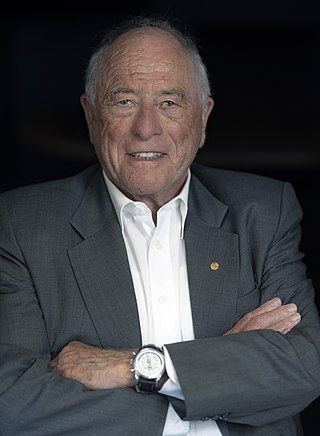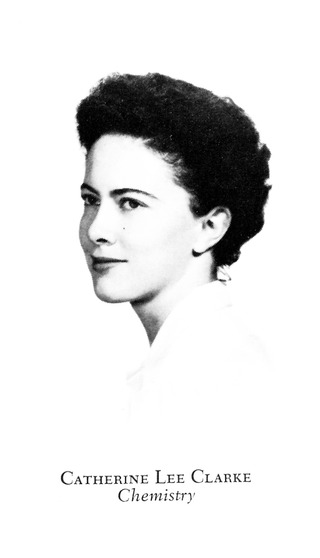
Kurt Wüthrich is a Swiss chemist/biophysicist and Nobel Chemistry laureate, known for developing nuclear magnetic resonance (NMR) methods for studying biological macromolecules.

The Max Planck Institute for Biophysical Chemistry, also known as the Karl-Friedrich Bonhoeffer Institute, was a research institute of the Max Planck Society, located in Göttingen, Germany. On January 1, 2022, the institute merged with the Max Planck Institute for Experimental Medicine in Göttingen to form the Max Planck Institute for Multidisciplinary Sciences.

Alexander Pines is an American chemist. He is the Glenn T. Seaborg Professor Emeritus, University of California, Berkeley, Chancellor's Professor Emeritus and Professor of the Graduate School, University of California, Berkeley, and a member of the California Institute for Quantitative Biosciences (QB3) and the Department of Bioengineering. He was born in 1945, grew up in Bulawayo in Southern Rhodesia and studied undergraduate mathematics and chemistry in Israel at Hebrew University of Jerusalem. Coming to the United States in 1968, Pines obtained his Ph.D. in chemical physics at M.I.T. in 1972 and joined the UC Berkeley faculty later that year.

Molecular biophysics is a rapidly evolving interdisciplinary area of research that combines concepts in physics, chemistry, engineering, mathematics and biology. It seeks to understand biomolecular systems and explain biological function in terms of molecular structure, structural organization, and dynamic behaviour at various levels of complexity. This discipline covers topics such as the measurement of molecular forces, molecular associations, allosteric interactions, Brownian motion, and cable theory. Additional areas of study can be found on Outline of Biophysics. The discipline has required development of specialized equipment and procedures capable of imaging and manipulating minute living structures, as well as novel experimental approaches.
Adriaan "Ad" Bax is a Dutch-American molecular biophysicist. He was born in the Netherlands and is the Chief of the Section on Biophysical NMR Spectroscopy at the National Institutes of Health. He is known for his work on the methodology of biomolecular NMR spectroscopy.
David S. Cafiso is an American biochemist and a Professor of Chemistry at the University of Virginia. His research focuses on membrane proteins and cell signaling, and is primarily supported by grants from the National Institute of Health.

Joachim Heinrich Seelig is a German physical chemist and specialist in NMR Spectroscopy. He is one of the founding fathers of the Biozentrum of the University of Basel.

Catherine Clarke Fenselau is an American scientist who was the first trained mass spectrometrist on the faculty of an American medical school; she joined Johns Hopkins School of Medicine in 1968. She specializes in biomedical applications of mass spectrometry. She has been recognized as an outstanding scientist in the field of bioanalytical chemistry because of her work using mass spectrometry to study biomolecules.
Stephen H. White is an American Biophysicist, academic, and author. He is a Professor Emeritus of Physiology and Biophysics at the University of California, Irvine.

Frances Separovic is a biophysical chemist, Distinguished Professor Emeritus of Chemistry, Deputy Director of the Bio21 Institute and former Head of the School of Chemistry at the University of Melbourne, where she taught physical chemistry and graduate students in her field. She is credited with developing a technique which utilises nuclear magnetic resonance spectroscopy (NMR) to study peptides in aligned lipid bilayers, and has applications in the study of the structure of membrane proteins and their effects on the membrane. Her current research concerns 'the structure and interactions of amyloid peptides from Alzheimer's disease, pore-forming toxins and antibiotic peptides in model biological membranes'.

Barbara E. Ehrlich is Professor of Pharmacology and of Cellular and Molecular Physiology at Yale University working on the biophysics of membrane ion channels. Recent research investigates the function of polycystin-2, the inositol trisphosphate receptor, and the ryanodine receptor.

Gerhard Wagner is a German-American physicist currently the Elkan Rogers Blout Professor of Biological Chemistry and Molecular Pharmacology at Harvard Medical School and is an Elected Fellow of the American Association for the Advancement of Science, German National Academy of Sciences Leopoldina, American Academy of Arts and Sciences, National Academy of Sciences and International Society of Magnetic Resonance. He is considered one of the pioneers in Biological Nuclear Magnetic Resonance (NMR) spectroscopy (Bio-NMR) and his research has been focused on protein structure, dynamics and stability, and on the relation of these to protein function. He is a structural biologist and is recognized for his work on the development of NMR spectroscopy for determination of protein structures in solution and characterizing protein dynamics.

Gregory A. Voth is a theoretical chemist and Haig P. Papazian Distinguished Service Professor of Chemistry at the University of Chicago. He is also a Professor of the James Franck Institute and the Institute for Biophysical Dynamics.
Attila Szabo is a biophysicist who is a Distinguished Investigator and Section Chief of the Theoretical Biophysical Chemistry Section in the Laboratory of Chemical Physics at the National Institute of Diabetes and Digestive and Kidney Diseases, part of the United States National Institutes of Health.

James J. Chou (周界文) is a Chinese American scientist and Professor of Biological Chemistry and Molecular Pharmacology at the Harvard Medical School. He is known for pioneering the use of Nuclear Magnetic Resonance (NMR) Spectroscopy to reveal the structural details of the membrane regions of cell surface proteins, particularly those of immune receptors and viral membrane proteins.

Helen Jane Dyson is a British-born biophysicist and a professor of integrative structural and computational biology at the Scripps Research Institute in La Jolla, California. She also serves as editor-in-chief of the Biophysical Journal. She was elected a Member of the National Academy of Sciences in 2022.

Mei Hong is a Chinese-American biophysical chemist and Professor of Chemistry at the Massachusetts Institute of Technology. She is known for her creative development and application of solid-state nuclear magnetic resonance (ssNMR) spectroscopy to elucidate the structures and mechanisms of membrane proteins, plant cell walls, and amyloid proteins. She has received a number of recognitions for her work, including the American Chemical Society Nakanishi Prize in 2021, Günther Laukien Prize in 2014, the Protein Society Young Investigator award in 2012, and the American Chemical Society’s Pure Chemistry award in 2003.
Gabriela S. Schlau-Cohen is a Thomas D. and Virginia W. Cabot Career Development Associate Professor at MIT in the Department of Chemistry.
Bonnie Ann Wallace, FRSC is a British and American biophysicist and biochemist. She is a professor of molecular biophysics in the department of biological sciences, formerly the department of crystallography, at Birkbeck College, University of London, U.K.












